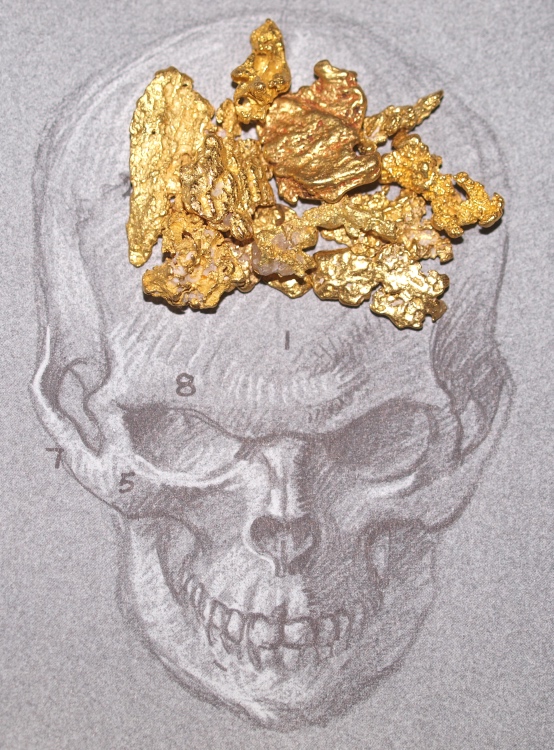The California Gold Rush that began in 1848 was largely centered in the Sierra Nevada Mountain Range which was by far the top producer of gold in the state. While the Sierra Nevada held the promise of California’s gold rush period, and attracted thousands of prospectors into the area, the coastal mountains, though rugged and remote, produced their fair share of gold and today, they still contain some unexploited deposits.
California’s Coastal Mountain Range stretches across several counties from Humboldt in the northwest along the Pacific coast to Santa Barbara in the south. It includes part of the southern end of the Klamath Mountains and the following:

History of Gold Mining in California’s Coastal Mountain Range
During the gold rush period the limelight was dominated by the exploits of prospectors across the mother lode in the Sierra Nevada valleys. This popular imagination limited the possible exploration in the rugged mountains along the coast. In fact, the Coast Ranges from Santa Barbara all the way to the Oregon border were known more for their mercury mines rather than gold and some of the gold deposits in these mountains are closely linked to the mercury and antimony mines in the region.
When the placer deposits were depleted, prospectors began to increasingly explore further afield for lode deposits. Some of the earliest gold mining in the coastal ranges was reported in the 1800s. The placer deposits of San Gabriel Mountains were being mined in 1834 before lode mining commenced in the 1880s.
Some of the key mines include:
The McLaughlin Mine (Mount Diablo, Colusa County)
This was the largest gold producer in the Coast Ranges and was earlier known as the Manhattan Mine. Although gold was reported in the area, only mercury was mined at the site from the 1860’s until 1978 when analysis revealed viable gold deposits. Large scale production of gold started in 1985 and ended in 1996.
Cherry Hill Deposit (Mount Diablo, Colusa County)
Located about 14 miles to the north of the McLaughlin Mine in the Sulphur Creek District, this deposit is a group of mines that are close to each other namely Wide Awake (also known as the Buckeye Mine), West End and Manzanita. Gold was mined at the site since its discovery in 1863 embedded in veins. This continued until 1892 when mercury became the primary commodity of interest.
Royal Mountain King Mine (Mount Diablo, Calaveras County)
This was a combination of two mines, the Royal Mine and the Mountain King Mine. Gold (which was mostly in placers) was discovered at this site in 1851. By 1857 operations had shifted to lode mining. The 1880’s saw a ramp up in production after large deposits were discovered at both mines. More than 20,000 ounces of gold were produced by the Mountain King Mine.
The Palisade Grigsby Mine (The Palisades, Napa county)
This was a silver and gold mine that operated from 1888 until it was closed in 1941. Located near Calistoga, it produced more than 50,000 ounces of gold.
Ramage and Campbell Placer Mine (Klamath Mountains, Del Norte County)
This was a placer gold mine that is located about 5 miles east of Fox Ridge.
Durham Ranch Mine (Santa Cruz Mountains, San Mateo County)
This was a gold and silver mine located along Durham Ridge about six miles west of Woodside.

Gold in California’s Coastal Mountain Rivers
Several rivers that drain through the coastal ranges have historically recorded placer gold deposits. These include:
Klamath River
This river flows through rugged terrain in the Klamath Mountains and the Cascade Range before emptying into the Pacific. Its flow through gold-bearing formations provides ample placer gold deposits along most of its length. There are lots of rich prospecting locations within the Klamath National Forest.
The Trinity River
A major tributary of the Klamath River, this river drains the southern part of the Klamath Mountains, carrying with it glittering gold which was first spotted in 1851.
Salmon River
This is also a tributary of the Klamath River and has a history of rich placer and lode deposits.
Cottonwood Creek
A major creek that flows through the southern Klamath Mountains, pouring its waters into the Sacramento River. Large scale dredges were used to mine millions of dollars worth of gold on this creek.
Napa River
This river originates in the Mayacamas Mountains and flows through Napa Valley before it discharges into San Pablo Bay. Placer gold deposits have been spotted in the area near Calistoga.
Summary
Compared to the Mother Lode gold production in the Sierra Nevada foothills, California’s Coastal Mountain Range may not be a match but the northern part of these ranges, especially in the Klamath mountains is among the principal gold producing regions of California.
While the northern coastal ranges region is rich in both lode and placer gold deposits, parts of the southern coastal ranges have their fair share of gold. A lot of areas with gold-bearing formations may not have been documented, which leaves the field open for those with gold prospecting skills. Gold prospecting is viable in California’s Coastal Mountain Range since the geology and general mineralization compares favorably to the Mother Lode Region.
